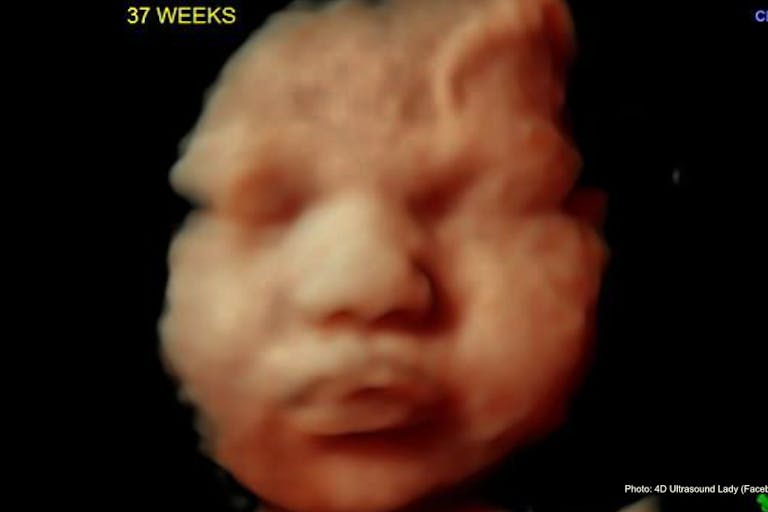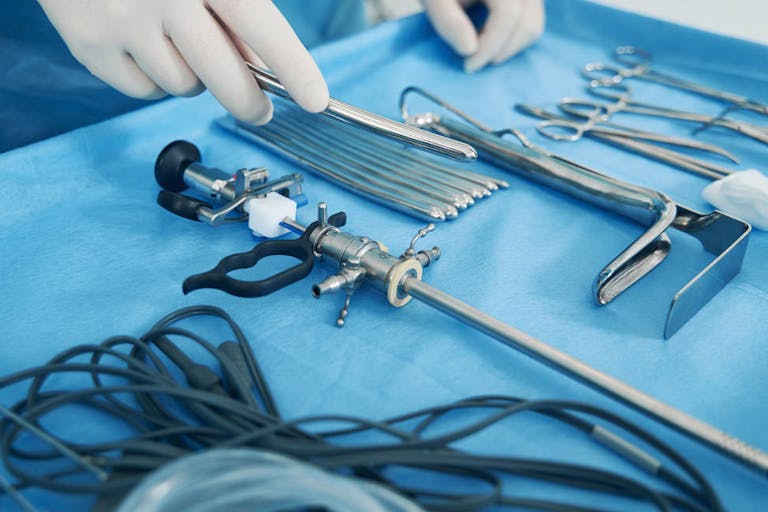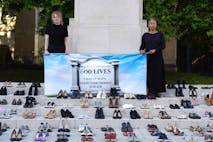
Prosecutors drop charges against Polish doctor who aborted baby in ninth month
Nancy Flanders
·
Are abortionists the victims of laws protecting preborn humans? The media seems to think so.
The mainstream pro-abortion media has been continuing its portrayal of abortionists as heroes and martyrs, and this has only increased since the reversal of Roe v. Wade in June 2022. Colorado’s self-described “late term abortion specialist” Warren Hern has received features in more than one outlet, as have others, such as Virginia abortionist Wesley Adams.
More recently, local outlet The Tampa Bay Times penned an article painting abortionist Rachel Rapkin as a pro-abortion martyr, who was allegedly forced to move in order to protect her family. An OB/GYN once based in Florida, Rapkin has left the state — and the country — and relocated her family to New Zealand, where abortion is essentially allowed on demand throughout pregnancy.
In reality, however, this appears to have been more of a strategic career move than an act of desperation.
Becoming an abortionist
Rapkin set her sights on becoming an abortionist while attending the University of Maryland in 1998, where she volunteered at the campus health clinic. After sending a student to an abortion facility, she decided to go see the facility for herself. That same day, she was offered a job working at the front desk.
She said she soon noticed that all of the doctors were “old men.” The facility manager told her, “Rachel, these are the doctors we have. If you want to change that, then you go to medical school and become an OB-GYN so you can perform abortions.” So she did.
Expanding abortion in Florida
Rapkin then made her way to Florida where, at the time, abortion was more widely accessible than it is now. Hospitals, according to the Tampa Bay Times, “opted not to provide abortions on-site, instead sending patients to clinics like Planned Parenthood. There was also a general shortage of doctors.”
Florida hospitals were not ignoring a valid medical procedure by not committing abortions. They likely knew that induced abortion — the intentional and direct killing of a preborn child — is not medically necessary. It is actually faster to carry out an emergency preterm delivery or C-section than to take the time to kill a child prior to delivery.
But, abortion was legal in Florida and Rapkin seemed eager to expand it in the state — to make it ‘ordinary,’ said the Times.
While at the University of Southern Florida Health (USF Health), she was told not to even say the word ‘abortion’, but as time went on, she persuaded the hospital to begin committing abortions on preborn babies who had a prenatal diagnosis. However, there is not a medical reason for abortion in these cases either; instead, it is an act of eugenics under the guise of compassion.
Rapkin also ensured that a trainee watched every abortion she committed, and she sent students to watch abortions at Planned Parenthood. Then in 2020, she helped establish a Ryan Program — a national abortion training initiative from the Bixby Center for Global Reproductive Health at the University of California, San Francisco at both USF Health and Tampa General Hospital.
Rapkin and her husband David — also an OB/GYN who notably does not commit abortions — were living a comfortable life. They had three children and a nanny to care for them. Rapkin became friendly with other mothers who were, interestingly enough, lawyers, doctors, and media personnel.
After Florida passed a law protecting preborn children from abortion beginning at 15 weeks, Rapkin began to fear she would lose a large percentage of her business. Then in 2022, Roe v. Wade was overturned, and she immediately decided she had to leave. Then, a week before the movers arrived, Florida passed a law protecting preborn children beginning at first detectable heartbeat, usually around six weeks gestation (four weeks post-fertilization).

Strategic move to New Zealand
Rapkin chose New Zealand as her next home for the same reasons she gave for having moved to Florida about a decade earlier — abortion is legal and there is a shortage of doctors. But in New Zealand, the government is so abortion-friendly that it is paying her to train new abortionists.
Article continues below
Dear Reader,
In 2026, Live Action is heading straight where the battle is fiercest: college campuses.
We have a bold initiative to establish 100 Live Action campus chapters within the next year, and your partnership will make it a success!
Your support today will help train and equip young leaders, bring Live Action’s educational content into academic environments, host on-campus events and debates, and empower students to challenge the pro-abortion status quo with truth and compassion.
Invest in pro-life grassroots outreach and cultural formation with your DOUBLED year-end gift!
The Tampa Bay Times describes her decision to move as one of “heartache” — as if she were being forced to leave, to ‘go where she is needed.’ But by her own account, as an OB/GYN, she was still needed in Florida. Yet without the daily killing, the job just wasn’t going to be that profitable for her anymore.
The Times says that Rapkin and her husband “struggled” with the decision to leave. “Would leaving mean giving up? But what would it mean to stay? Wasting expertise, surely. Turning a shoulder on Rachel’s life’s work. Their peers were making a similar calculation,” wrote the Times.
If this were just about being an OB/GYN doing standard OB/GYN care, why wasn’t it necessary for her husband to leave? Why was the move about ensuring Rapkin could continue her “life’s work”?
The truth is that Rapkin chose to leave despite her claim that women still needed her — because she didn’t want to waste her expert skills in ending the lives of preborn human beings. Yet, said the Times, despite a waitlist for pap smears and a third of Florida counties without a single OB/GYN, Rapkin chose to leave. She told the story of a patient whose water had broken, saying she was at risk of hemorrhaging due to the placenta blocking her cervix — known as placenta previa. She claimed the woman needed a surgical abortion, but this is not the case. In order to carry out a surgical abortion, Rapkin would have to put the instruments through the placenta — a dangerous move.
Dr. Christina Francis, AAPLOG’s Chairman of the Board, explained that carrying out an abortion in this case could actually kill the mother. She said (emphasis added):
Placenta previa is a condition in which the placenta covers the cervix, making a vaginal delivery impossible due to the possibility of life-threatening hemorrhage if labor occurs. These are frequently diagnosed in pregnancy on ultrasound around 20 weeks, however approximately 90% of these will resolve on their own before delivery. If significant hemorrhage occurs due to a placenta previa (which again is so rare prior to viability that no incidence is even reported), the patient should be taken for an emergency C-section which is the most expedient way to get her bleeding under control.
It would be medically dangerous and irresponsible to try to do an abortion since any instrumentation through the cervix would pierce the placenta and cause immediate massive bleeding. An abortion would take significantly longer in this case and be much riskier for the mother.
The woman was 19 weeks pregnant and therefore her baby was not old enough to survive outside the womb and would have died from natural causes. Rapkin claims the woman had to go home to get sicker before she could have the abortion — and if this is true, the doctors who sent her home may be guilty of neglect.
Rapkin also shared the story of a 17-year-old who sought an abortion at 21 weeks thinking she was only seven weeks pregnant. “She was forced to give birth,” said the Tampa Bay Times. Her baby was old enough to survive outside the womb, but Rapkin and the Tampa Bay Times advocated for this child’s death simply because the baby’s mother didn’t realize she was pregnant.
There was also a 14-year-old who was dealing with drug and alcohol addiction. When she became pregnant, she wanted an abortion but didn’t want to get parental consent because she was in foster care after her mother’s death. She went before a judge for permission and Rapkin committed an abortion on her at 11 weeks. She said she would never get clean if she had to have a baby — but evidence shows this is not necessarily the case and that the trauma of abortion may actually increase a woman’s risk of alcohol and drug use.
A cross-sectional study reported that post-abortive women saw triple-digit increases in the risk for alcohol abuse (261%), alcohol dependence (142%), drug abuse (313%), drug dependence (287%), and any substance use disorder (280%). Whether or not the child was ‘wanted’ does not seem to matter – an American longitudinal cohort study found that both wanted and unwanted pregnancies ending in abortion led to a doubling of the risk of future substance abuse.
Rapkin also claims she committed abortions on pro-life women, including one who was ‘trapped’ in an abusive relationship. She feared for her safety and the safety of her children if her abusive partner learned she was pregnant, so Rapkin aborted her baby. No word on whether or not Rapkin helped the woman escape her abuser.
The most vulnerable
As she received an award from Planned Parenthood shortly before leaving Florida, Rapkin told a crowd of doctors, “I cannot stress enough how much our patients need you right now. They are absolutely the most vulnerable among us.”
But there are human beings even more vulnerable than the women who are persuaded and pushed into abortions — their preborn babies, who are killed in every single abortion procedure — their bodies poisoned by pills or broken by suction machines and Sopher clamps, their hearts stopped by deadly injections. And then, as if they are nothing more than garbage, their tiny broken bodies are thrown into dumpsters and medical waste bins as if they are less than human — worthless.
It is abortionists’ ‘life’s work’ to ensure that more babies are treated this way.
Live Action News is pro-life news and commentary from a pro-life perspective.
Contact editor@liveaction.org for questions, corrections, or if you are seeking permission to reprint any Live Action News content.
Guest Articles: To submit a guest article to Live Action News, email editor@liveaction.org with an attached Word document of 800-1000 words. Please also attach any photos relevant to your submission if applicable. If your submission is accepted for publication, you will be notified within three weeks. Guest articles are not compensated (see our Open License Agreement). Thank you for your interest in Live Action News!

Nancy Flanders
·
Pop Culture
Cassy Cooke
·
International
Cassy Cooke
·
Analysis
Cassy Cooke
·
Analysis
Angeline Tan
·
Analysis
Cassy Cooke
·
Politics
Nancy Flanders
·
Activism
Nancy Flanders
·
Issues
Nancy Flanders
·
Human Interest
Nancy Flanders
·
Investigative
Nancy Flanders
·